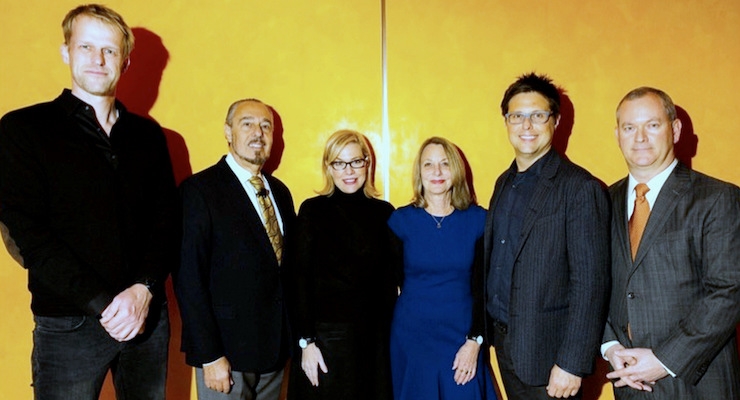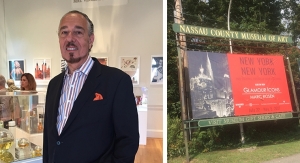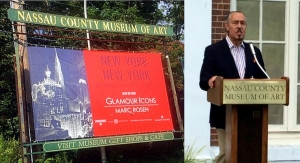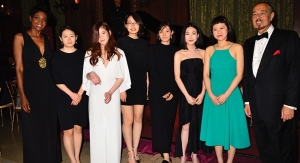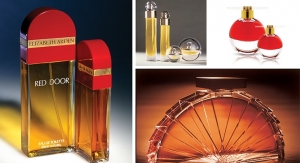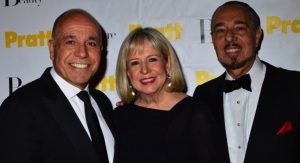Jamie Matusow, Editor-in-Chief11.16.17
With the idea that “design is experiential” and “a crossover for everything,” Pratt Institute hosted its second annual design symposium, “The DNA of Design,” on November 13, at The Times Center in Manhattan.
The program featured five highly accomplished branding experts and designers—esteemed panelists Debbie Millman, Paula Scher, Arne van Oosterom and Terry Young. Marc Rosen, renowned packaging designer and professor of Pratt’s graduate packaging design course, was the moderator.
The sold-out event was open to the public, and supported by the Marc Rosen Education Fund with additional funding by Juliana Terian, The Terian Foundation.
Each of the speakers gave a 10-minute presentation followed by questions from the audience and group discussion, touching on themes including cultural anthropology, empathy, fluidity and cynicism.
The Relationship Between Design and Branding
Among many outstanding accomplishments, Debbie Millman, was named “one of the most influential designers working today,” by Graphic Design USA, and is the host and founder of the Design Matters podcast. She also co-founded “the world’s first graduate program in branding” at the School of Visual Arts in New York City.
Millman addressed the audience regarding the relationship between design and branding. Which came first? Is branding the birthplace of design? she asked—or the other way around.
She said it’s a little of both. To build a great brand, Millman said you have to start from the inside—and “Deliberate, deliberate, deliberate—and find the differentiation, which will be the result of intentional strategic positioning.” In the end, said Millman, “Branding is about four things: behavioral psychology, cultural anthropology, economics and creativity.”
Look Through Someone Else’s Eyes
Arne van Oosterom, the founder and partner of the global organization DesignThinkers Group, is recognized as a pioneer and thought leader in service design and design thinking. van Oosterom told the crowd that he attributes a lot of his free thinking to the fact that he is dyslexic and naturally looks at things from a different perspective.
He said, for successful design and branding, “We have to learn to use sympathy, look through someone else’s eyes. Design, he said, is about how we help people reach their goals. He gave an example of the value of co-creation: “When you’re selling a car, you’re also selling an image, a lifestyle.”
Branding
Fluidity is the key to cultural relevance in modern design, according to innovation and brand consultant Terry Young, the CEO of Sparks & Honey.” Humans oscillate at different speeds and different modes throughout the day,” said Young, “and we have to translate those moments into brands.”
While he noted that gender and race exist on a continuum, he also gave examples of designs that allow people to move from Point A to Point B, such as an oversized jacket that becomes a sleeping bag for two; and shelters that can shift in their construction to adapt to the environment.
From more recently branding the city-altering Highline in Manhattan to helping to bring back the Coney Island boardwalk and community with appropriate signage and structures after Hurricane Sandy, Paula Scher has been a leader in graphic design for decades, and a partner in the New York office of Pentagram since 1991. Her work has been exhibited all over the world and is included in multiple museum collections. As a graphic designer, she said she designs identities and creates visual languages.
Advice to Students
A number of those in the audience were students in NYC-based design programs. When they questioned the panel on advice for their futures in the field, the panelists offered their thoughts.
Millman suggested that a new employee should be the first one into the office and the last one out. “Do something meaningful for the organization—work harder than anyone around you,” she offered.
van Oosterom noted that he stood out when he started his career, by doing everything different than what was expected of him. “Be open, learn and question,” he advised.
“Break the rules,” said Young. “Do things in a different way. Disrupt, don’t get stuck.”
“Don’t be cynical,” suggested Scher, when questioned about accepting projects that don’t completely resonate with you.” She said, “Try to elevate things; put out something better.”
Photo shown above: The Design DNA Symposium Panel, (L-R): Arne van Oosteram, Marc Rosen, Debbie Millman, Paula Sher, Terry Young, Kirk Pillow (Pratt interim president)
Read More
MAC's James Gager at Pratt Institute's first annual symposium, 'Design Is the New Currency'

